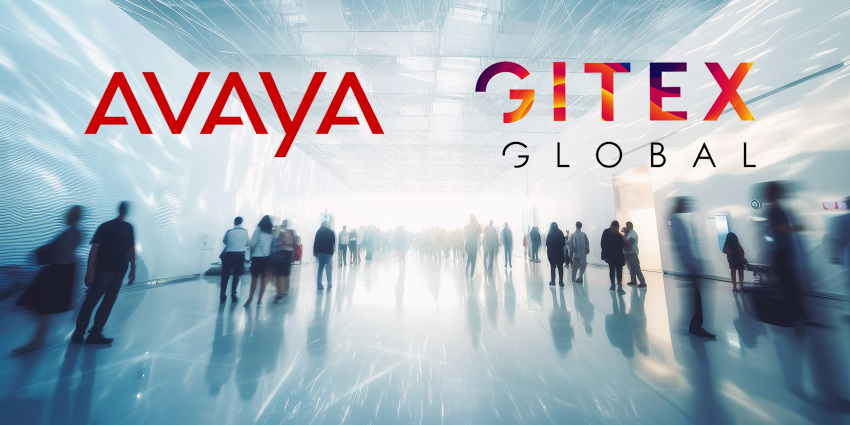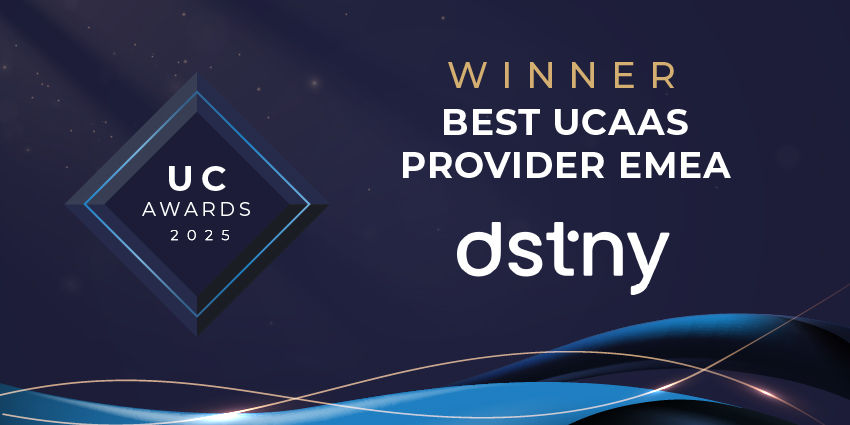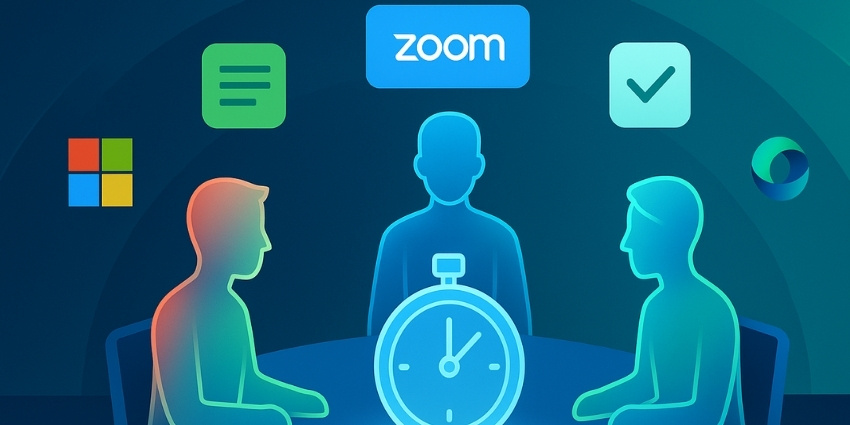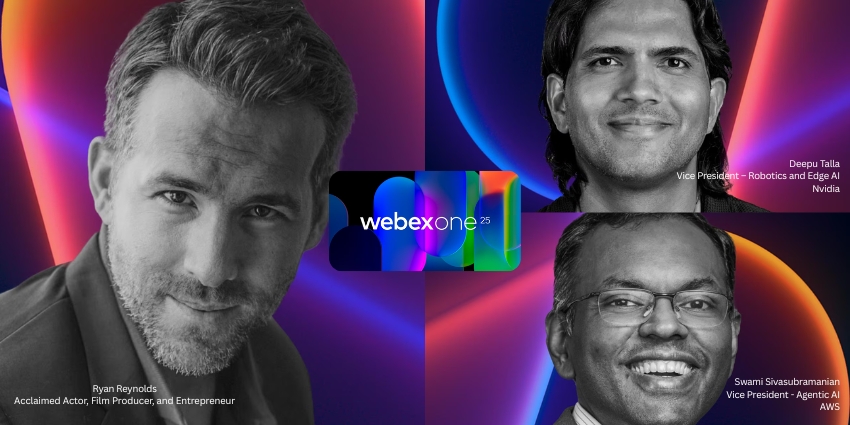Just four months on from their last big event Avaya welcomed customers and partners from around the globe to GITEX, one of the biggest technology exhibitions in the Middle East.
CEO Alan Masarek is keeping his strategy simple. It is one of transparency and presence. Whilst in the region, Masarek would meet with key customers, partners and media to deliver a consistent message. Avaya is on the comeback trail.
UC Today’s David Dungay spent the week talking to key executives, partners, analysts and customers about the vision, the portfolio and the roadmap. Here are the top takeaways from the week.
1 – Generative AI has Landed at Avaya
On the run up to GITEX Avaya released several Generative AI solutions for its contact centre customers which auto-generate new workflows and insights. Avaya has developed a journey mapper, a natural language search function and an AXP integration to help improve agent and customer interactions.
On the stand, Avaya was showcasing how they can overlay the technology onto a customer platform which was being used in a metaverse use case. DEWA (Dubai Electricity and Water Authority) has partnered with Avaya to enable a range of customer services through their DEWAVerse.
The initial appearance of an elaborate use-case designed to gain column inches soon evaporated as the solution was demonstrated as functioning in real time already. DEWA’s interactive engagement hub allows customers and agents to communicate and transact through the virtual world, all enhanced by AI.
You don’t get government-run cutting edge use-cases in the western world typically but this was a fantastic example of how public services can lead the private sector in technology innovation.
2 – People Attract People
Masarek announced his new board just 4 months ago at Avaya Engage in the US. Predictably, we were treated to a wheel-barrow full of heavy hitters, many of whom had worked with Masarek previously. Most weren’t ready to speak to the press at the time, as they were just days into their tenure. Now we are 4-months in and they are not only ready to talk, their impact is already being felt across the business.
The new board are not just changing products, structure, mindsets and process they are also attracting their own trusted relationships into key management positions beneath. These are people that don’t typically get highlighted in the press, but they are experienced, believe in the mission, and are having a ‘multiplier effect’ on the decisions at the top.
This was compounded through the week with existing staff and new starters all telling a similar story.
3 – Building a ‘Destination Workplace’ means back to the office
Serious change means making some serious decisions. Like many vendors in the space, Avaya has U-turned on its hybrid working policy. Masarek has mandated employees get back to the office five days a week if they live within 40 miles of an office. After a few years of hybrid working for the majority of the business, the decision has received a mixed reaction from staff.
Despite this, Masarek has stood firm – according to him, building a good working culture means doing it in person.
How Masarek fares in his ‘Culture Quest’ is still playing out of course. One thing is for sure, it’s going to take more than free donuts and unlimited Um Bongo.
4 – CX is the North Star, but UCaaS hasn’t been forgotten
Everything coming out of the Avaya camp right now is centred around the Experience Platform (AXP) and Avaya Customer Experience Services (ACES). However, they still have a sizeable number of customers sitting on Avaya’s on-premise UC offering – IP Office.
Avaya’s previous big UCaaS play was its RingCentral deal (Avaya Cloud Office). However, a low percentage of the base actually converted to ACO (as little a 5% according to some) for numerous reasons.
Many partners didn’t like the terms of the ACO deal (this was especially true in the UK) and many customers were happy with their on-premise system and weren’t ready to move to the cloud.
There are far too many customers sitting there with an on-premise solution for Avaya to not give this some renewed consideration. The RingCentral deal has been re-negotiated, Avaya is becoming truer to its wholesale roots, we will likely hear something before 2023 is over on what Avaya plans to do in UCaaS.
5 – The Community is Working Together
Avaya has always been a partner organisation, but now they are looking to leverage the power of the community like never before. Avaya has strongholds in its customer base that the partner community can learn from and benefit from regional innovation.
For example, in the UAE Avaya is dominant in the Public Sector, in Singapore it does particularly well in Banking… partners in other regions can take those innovations to their own markets and so the community benefits as a whole.
If Avaya can make this work for everyone it could be incredibly powerful. We spoke to some UK partners that were already pitching new innovations to the Avaya team during GITEX which suggests the approach has partner buy-in already.
Emir Susic, Global VP of ACES, commented:
“Innovation is not preserved for a person or a country, it’s preserved for communities.”
6 – Masarek Will be Judged on Growth
Avaya has been an easy target for the ‘Armchair Analysts’ who sit in various corners of the industry. There is no part of the business that hasn’t had to weather a hailstorm of hate from ex-employees to competitors. Rightly or wrongly, the history books won’t judge Alan Masarek on his first year in the chair, it will be on his ability to grow the company from here.
There is no denying there is a new ‘vibe’ around Avaya. Masarek has done a remarkable job getting Avaya to this point. But can he bring a growth mentality back to the business that has managed one growth year out of the last twenty?
His forecast indicates a 9% growth in revenue from 2023-2027 with the first few years of that being flat or in slight decline. This means by the end of next year the company needs to be in growth mindset and capable of delivering double-digit growth to deliver on Masarek’s vision.
Verdict
With fresh management in place, and more to come, you can taste the optimism in the air at Avaya. Despite the positive energy, it will be Avaya’s customers who will decide whether the company goes on to achieve great things.
If you are an enterprise contact centre buyer with an Avaya estate you are probably weighing up your options right now. The good news for Avaya is that migrating out of a complex contact centre deployment isn’t easy and it takes time. If Avaya can maintain its current rate of progress it has a real shot at turning those customers around.
For customers, Avaya is showing a real appetite to innovate around its products and understand their challenges. We have seen so many vendors push a cloud-only narrative that we forget not all customers want to move to the cloud in a rush. Avaya has a strong message with its ‘Choose your journey’ tagline and is playing to those large customers that want to migrate to cloud at their own pace in a way that suits them.
The partners will be another key indicator of success. Many moved away from Avaya over the last five years in favour of cloud-first vendors. The future success of Avaya will be determined by the partners that invest in Avaya’s solutions and believe in the roadmap. There is certainly a renewed interest in the partner community about what Avaya can offer, how much of that interest converts into business is still to play out.








